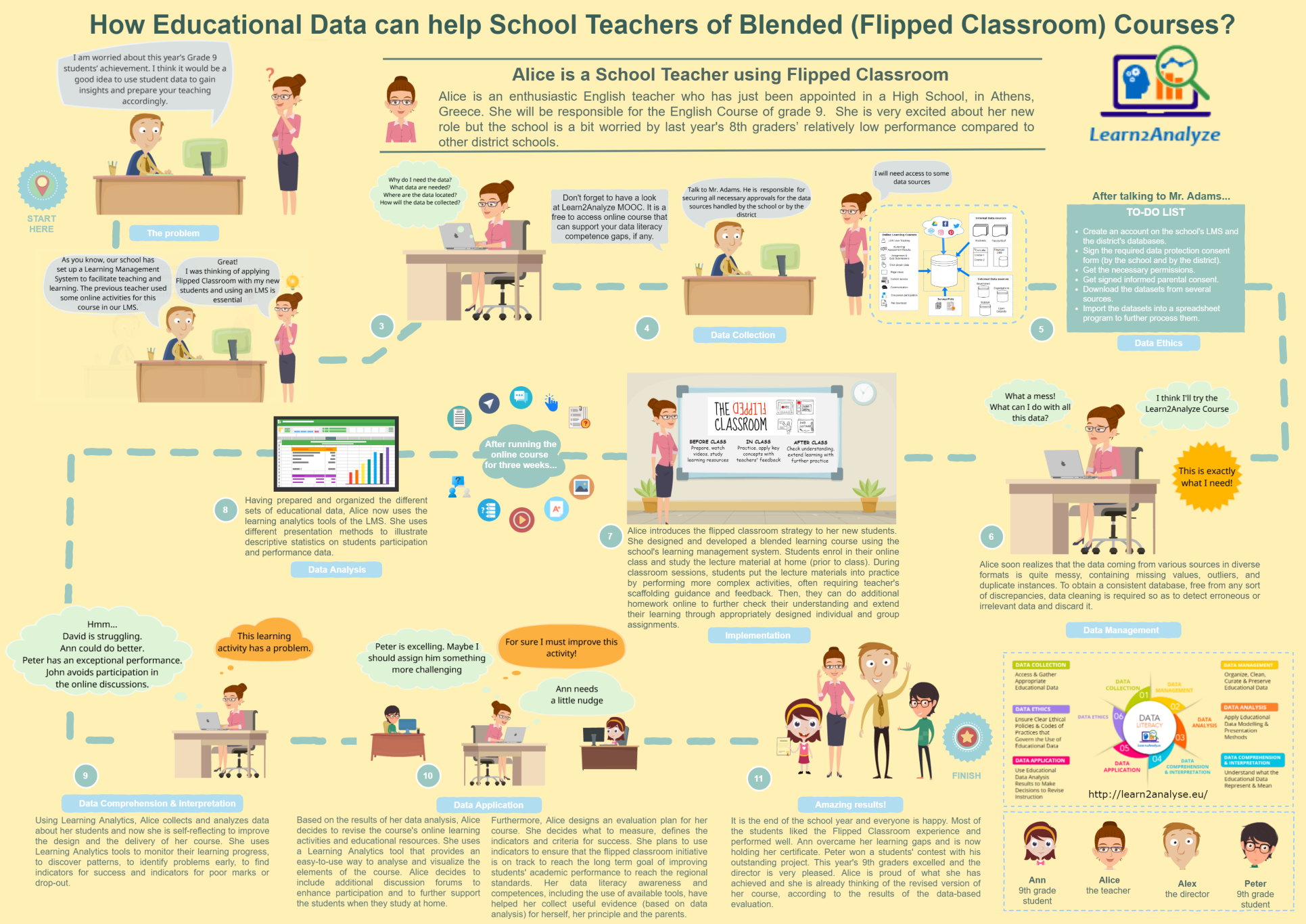EDL Competence Profile
The Learn2Analyze Educational Data Literacy Competence Profile (L2A-EDL-CP)
The Learn2Analyze project has developed a comprehensive proposal for an Educational Data Literacy Competence Framework to enhance existing competence frameworks for instructional designers and e-trainers of online courses with new Educational Data Literacy competences.
The Learn2Analyze Educational Data Literacy Competence Framework comprises of 6 competence dimensions and 17 competence statements, as captured below.
Competence Dimensions of L2A-EDL-CP

Competence Statements of L2A-EDL-CP
L2A-EDL-CP
Dimensions
L2A-EDL-CP
Statements
1. Data Collection
1.1 Know – understand – be able to obtain, access and gather the appropriate data and/or data sources
1.2 Know – understand – be able to apply data limitations and quality measures (e.g., validity, reliability, biases in the data, difficulty in collection, accuracy, completeness)
2. Data Management
2.1 Know – understand – be able to apply data processing and handling methods (i.e., methods for cleaning and changing data to make it more organized – e.g., duplication, data structuring)
2.2 Know – understand – be able to apply data description (i.e., metadata)
2.3 Know – understand – be able to apply data curation processes (i.e., to ensure that data is reliably retrievable for future reuse, and to determine what data is worth saving and for how long)
2.4 Know – understand – be able to apply the technologies to preserve data (i.e., store, persist, maintain, backup data), e.g., storage mediums/services, tools, mechanisms
3. Data Analysis
3.1 Know – understand – be able to apply data analysis and modeling methods (e.g. application of descriptive statistics, exploratory data analysis, data mining).
3.2 Know – understand – be able to apply data presentation methods (e.g., pictorial visualization of the data by using graphs, charts, maps and other data forms like textual or tabular representations)
4. Data Comprehension & Interpretation
4.1 Know – understand – be able to interpret data properties (e.g., measurement error, outliers, discrepancies within data, key take-away points, data dependencies)
4.2 Know – understand – be able to interpret statistics commonly used with educational data (e.g., randomness, central tendencies, mean, standard deviation, significance)
4.3 Know – understand – be able to interpret insights from data analysis (e.g., explanations of patterns, identification of hypotheses, connection of multiple observations, underlying trends)
4.4 Be able to elicit potential implications/links of the data analysis insights to instruction
5. Data Application
5.1 Know – understand – be able to use data analysis results to make decisions to revise instruction
5.2 Be able to evaluate the data-driven revision of instruction
6. Data Ethics
6.1 Know – understand – be able to use the informed consent
6.2 Know – understand – be able to protect individuals’ data privacy, confidentiality, integrity and security
6.3 Know – understand – be able to apply authorship, ownership, data access (governance), re-negotiation and data-sharing
Use-cases of L2A-EDL-CP
The following use-cases show in the form of an infographic how competences in educational data analytics can help the three target groups School Teachers in K12 Blended Courses, Instructional Designers in a corporate context and e-Trainers in a Higher Education context.



